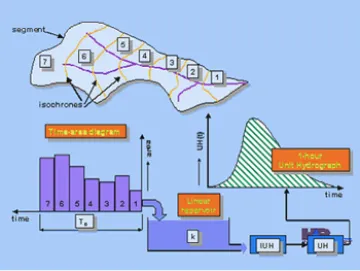International G-WADI Workshop on Modelling in Semi-Arid Regions

28th February-5th March 2005
National Institute of Hydrology
Jal Vigyan Bhawan, Roorkee
247 667, INDIA
Sponsored by
- UNESCO G-WADI Network and Beijing, New Delhi and Tehran Offices
- IHP-UNESCO Paris
- DFID United Kingdom
- G-WADI Network for South, Central and East Asia
- Indian National Committee on Hydrology
- Indian Institute of Technology, Roorkee
- UNESCO G-Wadi Network
- UNESCO Tehran Office
- UNESCO New Delhi Office
- UNESCO’s International Hydrological Programme (IHP), Paris
- Department for International Development (DFID), UK
- G-WADI Network for South and Central Asia
- Indian National Committee on Hydrology (INCOH)
- Indian Institute of Technology, Roorkee, India
Organizers
- Howard Wheater, Imperial College London
- Soroosh Sorooshian, University of California
- KD Sharma, Institute of Hydrology, Roorkee
Background
Hydrological modelling has an important role to play in most aspects of water and environmental management. These include the sustainable development of water resources, the integrated management of river basins, flood design and flood management, water quality management and the protection of ecological systems. However, modelling and application is problematic, particularly for arid and semi-arid areas, for several reasons:
1. The hydrological characteristics of arid and semi-arid areas pose particular difficulties, for example:
- The temporal variability of precipitation, runoff and associated groundwater recharge can be extreme (a year’s rainfall may fall in a single day; runoff from a single rare event may exceed total runoff from several years).
- The spatial variability of precipitation can also be extreme, particularly for convective rainfall
- Surface water hydrographs can be difficult to interpret due to transmission losses in flowing channels
- Groundwater recharge is often limited and highly uncertain and surface water-groundwater interactions are often not well understood
- Data are difficult to collect, and data availability is generally limited in terms of network density and record lengths
2. A wide variety of models and model types are available, and the strengths and limitations of alternative approaches are generally not fully appreciated
3. New approaches to model development and testing and the analysis of uncertainty are available, facilitated by increased computer power. As a result major progress is being made in areas of application such as modelling ungauged catchments. Although the research community is extensively adopting these methods, training is not widely available and application at practitioner level remains limited.
Objectives of the workshop
Given the above, G-WADI aims to provide modelling support to the regional centres and user community through:
- Provision of clear guidance concerning model strengths and limitations for arid and semi-arid zone application.
- Provision of access to appropriate software tools, including models and modelling environments.
- Provision of access to web-based training material.
- Compilation of case study application.
In the first instance, this will be delivered to the global community through the G-WADI web-site, although the regional centres may wish to build on this initiative by developing regional dissemination and training activities. The web-site material will be developed by commissioning state-of-the-art presentations by invited speakers, delivered within the context of a small workshop comprising arid zone modelling experts, model users (representative of the regional interests), and web-site specialists.
Papers from the Workshop
The papers from the workshop, along with other information, are at http://web.sahra.arizona.edu/unesco/shortcourses/ .
